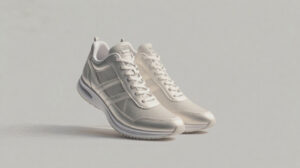A shoe last is an indispensable tool in shoemaking, and its importance throughout the manufacturing process cannot be overstated.
First and foremost, it determines the fit and comfort of the final shoe. Acting as a 3D mold that mimics the shape of a human foot, the shoe last dictates the shoe’s overall structure, including its length, width, arch support, toe box space, and heel curvature. Every part of the shoe—from the upper to the insole and even the sole—is shaped and formed around the shoe last during production. This ensures the finished shoe aligns with the natural contours of the foot, preventing issues like pinching, slipping, or pressure points, and ultimately guaranteeing a comfortable, snug fit.
Additionally, the shoe last defines the style and functionality of the shoe. Different lasts are designed for specific shoe types (e.g., athletic shoes, formal boots, or sandals) to meet their unique needs—for example, a running shoe last may feature extra toe room for forward movement, while a dress shoe last prioritizes a sleek, tailored shape. It also guides critical manufacturing steps: during assembly, the upper is stretched and secured over the last to maintain its intended form, and the sole is attached with the last’s structure ensuring proper alignment.
In essence, the shoe last serves as the “blueprint” for a shoe’s fit and form, making it foundational to creating footwear that is both comfortable and functionally suited to its purpose.




